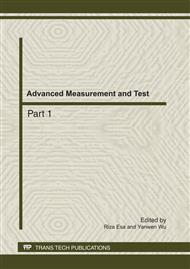p.1367
p.1372
p.1378
p.1384
p.1389
p.1395
p.1401
p.1406
p.1411
An Improved Comprehensive Index Method for the Evaluation of Rock Burst Risk in Mining
Abstract:
There are uncertainties such as randomicity, vagueness, gray, unsureness in the factors of comprehensive evaluation of rock burst risks due to the complexity of the geological conditions and deficiency of experimental data. In this paper, we apply the mathematic theory of blind information to the comprehensive index method for the assessment of rock burst risks, use blind data to express the uncertainty of the risk index, and put forward blind data form of the comprehensive index. Meanwhile, by use of blind data algorithms, we compute the reliability value in different numerical value intervals of comprehensive index, which consequently provide more comprehensive evidence to judge the rock burst risk levels and overcome the problem of absolutization in traditional methods. The case analysis indicates that the apply for blind data in rock burst evaluation can consider influential factors better and obtain more reliable results. In conclusion, it is a new way of evaluating the rock burst more comprehensively and scientifically.
Info:
Periodical:
Pages:
1389-1394
Citation:
Online since:
July 2011
Authors:
Keywords:
Price:
Сopyright:
© 2011 Trans Tech Publications Ltd. All Rights Reserved
Share:
Citation:


